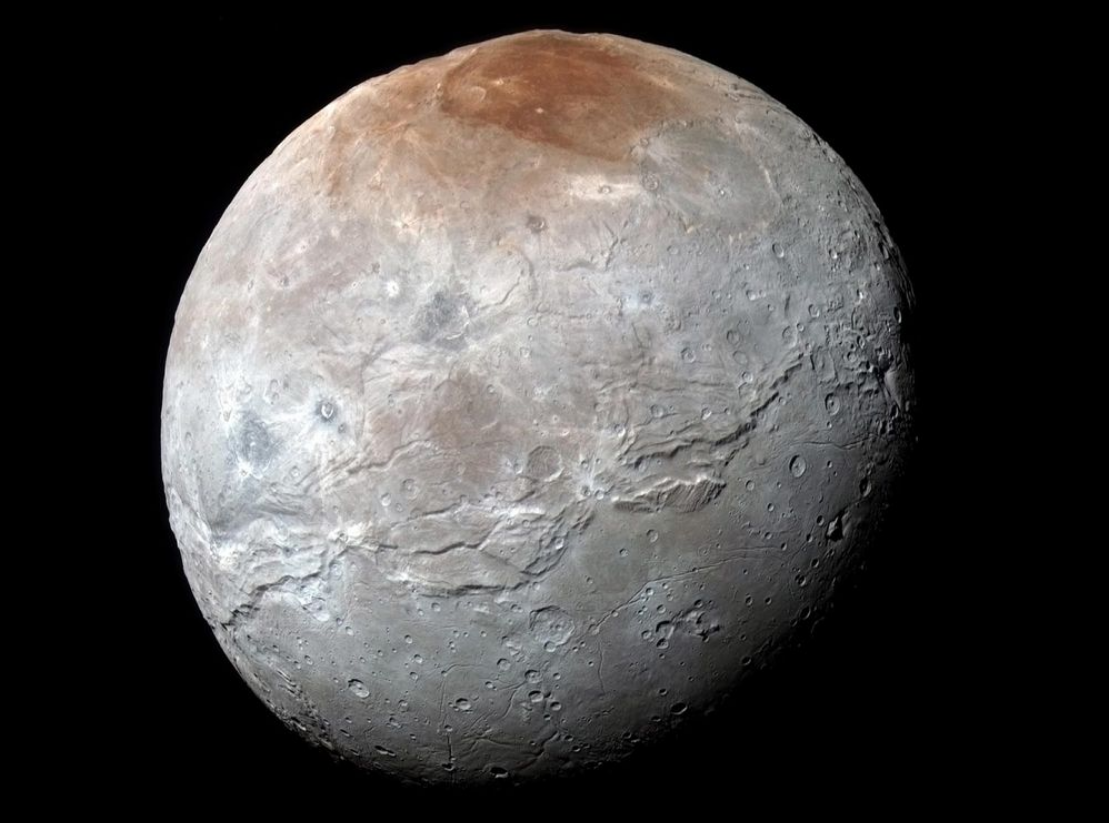Could there be Bose-Einstein condensate in the atmosphere of the Charon? Could there be a boson cloud between those gas molecules? There is a possibility that a large part of that atmosphere is formed of helium atoms. And that thing means that there is the possibility that part of that atmosphere is formed of Bose-Einstein condensate.
Even if Charon itself doesn't have its atmosphere it pulls gasses like methane out from Pluto's atmosphere. And there is also helium at the highest altitude of Pluto's atmosphere. So Charon could pull those helium atoms to orbit itself. And that thing can cause that near the poles of that small world is forming the Bose-Einstein condensate.
Because of the low temperature. The temperature on the dayside of the Charon is about -220 degrees Celsius, but on the night side, it's far lower. The low temperature means that all reactions on that moon are extremely slow.
The image above portrays Charon, the largest moon of Pluto. The image shows the red cap of that small world. And the red or brown dust on the cap of this small world looks like cardamom. That is thrown away. The thing that makes this cap interesting is its form and size.
Conditions on that small world are so cold and stable that there could be Einstein-Bose condensate freely in the extremely thin atmosphere of that moon. There is the possibility, that part of the atmosphere is in the form of the Bose-Einstein condensate.
The source of that red area could be an impact with some cosmic snowball. But scientists are suggesting that the sunlight causes some kind of chemical reactions in the thin atmosphere of Charon.
The energy level on the surface of that moon is very low. So the material in that atmosphere would be the form of the Bose-Einstein condensate. And that thing makes this gas able to react with the magnetic field. If the methane in that atmosphere forms Bose-Einstein condensate. That thing makes it able to react to magnetic fields.
Bose-Einstein condensate is the gas of bosons. So there is the possibility that between methane atoms in the thin atmosphere of Charon are free bosons.
The question is: why that brown dust is so locally positioned on the Charon's surface? There is a possibility. That there is some kind of chemical reactions in that super cold world. The material in Charon's atmosphere is at a minimum energy level.
And there is a possibility that the magnetic field of that moon causes the ionized material to pile up to the poles of Charon. If the atmosphere of the thin atmosphere of that moon is partially in the form of Bose-Einstein condensate and conditions of the moon are otherwise extremely stable even the weak ion flow can drive that material to the poles.
https://en.wikipedia.org/wiki/Bose%E2%80%93Einstein_condensate
https://en.wikipedia.org/wiki/Charon_(moon)
https://en.wikipedia.org/wiki/Pluto





No comments:
Post a Comment
Note: Only a member of this blog may post a comment.